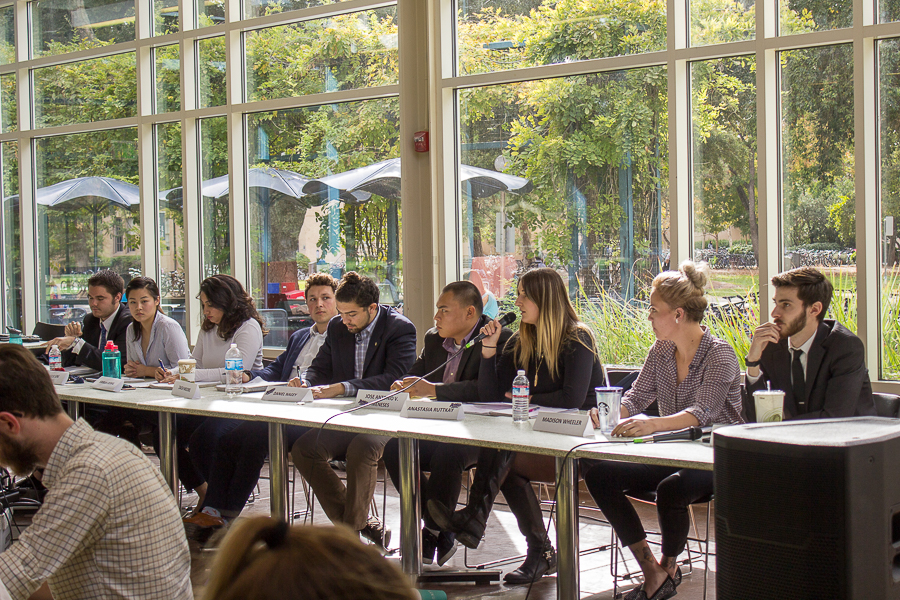
Results show lowest turnout in four years
Over the past few years, the number of students voting in the Fall Quarter ASUCD elections has steadily decreased. 2,287 ballots were cast during the recent fall 2016 election, which coincided with the 2016 presidential election. While the past few Winter Quarter elections have ranged from 730 to 4,441 votes, recent Fall Quarter elections have not seen an increase. Out of an undergraduate population of 28,324 students, less than eight percent of students voted in the Fall Quarter 2016 election.
ASUCD holds two elections every year: one in Fall Quarter and one in Winter Quarter. Six senators are elected during each, and the ASUCD president and vice president also run for office during Winter Quarter. Students can also vote on ballot measures, which are amendments to the ASUCD Constitution or Bylaws.
Fall Quarter elections tend to have lower voter turnouts than Winter Quarter elections.
“The best explanation I can give is a combination of official elections marketing […] and the candidates campaigning themselves,” said current ASUCD President Alex Lee.
While an elections committee or party can ask students to do their civic duty and vote, much like in a general election, Lee said that candidates and their campaigns ultimately drive voter turnout.
“Voter turnout is primarily driven by the candidates,” Lee said. “We have declining voter turnout in the nation, too.”
ASUCD Election Committee Chair Sevan Nahabedian agreed with Lee’s concerns regarding voter turnout.
“Voter turnout is highest when we have more candidates running,” Nahabedian said in an e-mail interview. “Candidates and slates inform their communities about elections and students participate because the benefits of voting are clear — my friend, colleague, brother or sister [or] teammate will be elected.”
While marketing for ASUCD happens year-round, candidates are officially given five weeks to declare candidacy but can begin campaigning unofficially at their discretion. Anastasia Ruttkay, a fourth-year international relations major, recorded the second highest number of votes to win her Senate seat during the fall 2016 election. Ruttkay found it was best to campaign under the BASED slate and use both social media and personal connections to form relationships with students.
“It’s extremely important to campaign in person,” Ruttkay said in e-mail interview. “This not only helps establish credibility, but it allows you to engage with the students you will be serving.”
Both Ruttkay and Lee agreed that making a campaign personal drives voter incentive. Lee, a veteran of ASUCD campaigns, stressed the importance of a candidate’s campaign and marketing.
“In my four years at ASUCD, the level of campaigning has decreased,” Lee said. “The less people you engage, the less voters you have.”
Ruttkay noted that the reach of ASUCD needs to be extended.
“Most students did not know about ASUCD or the voting process,” Ruttkay said. “I had to walk a lot of students through the responsibilities of an ASUCD Senator and how to vote online.”
Ruttkay believes that students will not vote if they share no interest in the election, do not know how to vote or if no candidate represents their interests.
According to Nahabedian, students may simply be unaware of the role of senators on campus. ASUCD controls a budget of over $11.8 million, and operates many units including Unitrans, The Pantry, Tipsy Taxi and Entertainment Council. The senate also approves the budget at the end of every academic year and oversees the development of ASUCD policies.
“I think it is a real problem if the average student does not know that they have elected leaders who [should] represent the entire student body,” Nahabedian said.
ASUCD voter turnout was likely impacted by the 2016 United States presidential election as well. Lee predicted that voter turnout would increase with the presidential elections, but was proven wrong.
“Election day was the first day of voting for ASUCD elections which caused a lot of students’ attention to be drawn from ASUCD elections and go to the national election,” Nahabedian said.
According to Ruttkay, senate candidates did not campaign as hard out of respect for the community after the presidential election, as many students were angered or upset by its results.
“I personally feel like the presidential election took away from ASUCD elections because candidates, like myself and my colleagues in BASED, did not feel [that] campaigning post-election day was appropriate to our campus climate,” Ruttkay said.
ASUCD’s marketing for elections was also affected by the presidential election.
“We were planning to do an Instagram challenge to bolster our marketing efforts but chose against doing so because of the mood on campus following the national election,” Nahabedian said.
ASUCD hopes to increase voter turnout in the future through a combination of institutional efforts as well as increased engagement by the candidates.
“There definitely needs to be more institutional knowledge about voting and what they’re voting for, […] once people understand that, it helps,” Lee said. “But that is a harder route than, ‘My friend is running, please vote for them’.”
Written by: Jayashri Padmanabhan — campus@theaggie.org




